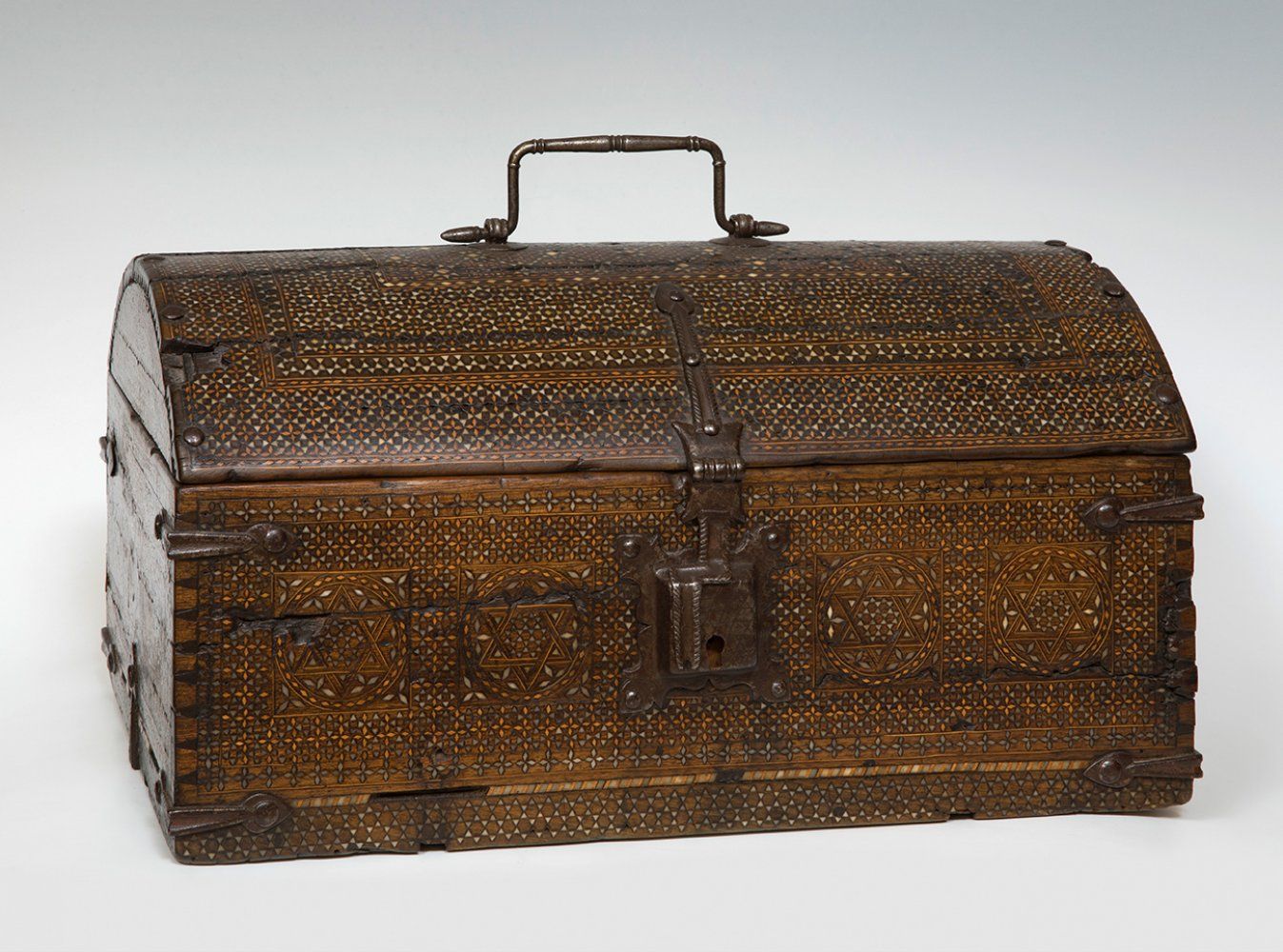Description
Chest; Al Andalus, Nasrid Kingdom, Granada, 15th century. Walnut, bone and boxwood. It has iron fittings. Presents restorations. Measurements: 22 x 43 x 27 cm. Chest of rectangular structure and. The vaulted lid is articulated by two long hinges that start and finish in fleur-de-lis. The piece is completed with a decoration based on geometric elements that are defined by the use of different materials. The technique used to insert the decorative elements into the wood is known as inlay, which consists of creating mosaics and other figurative elements through the application of different materials that, combined together, create geometric shapes and drawings of infinite forms. The quality and style of the work indicates that it is probably a piece from the workshops of Granada in the Nasrid period. The Nasrid or Nasri is the name given to the last Muslim dynasty that ruled the Kingdom of Granada between 1238 and 1492, and, by extension, to this period of Hispanic Muslim art. His art was characterized by its originality within the Spanish Gothic panorama, and also presented in some works a clear influence of both this European style and the Renaissance. The most characteristic example of Nasrid art is the Alhambra, where the skill of the Nasrid artists can be appreciated. The Nasrid dynasty ruled Granada and the territory of al-Andalus for more than 200 years and oversaw a splendid artistic patronage that is still greatly admired today. The Nasrids developed a sophisticated visual language based on complex geometric designs such as the one presented here.
56
Chest; Al Andalus, Nasrid Kingdom, Granada, 15th century. Walnut, bone and boxwood. It has iron fittings. Presents restorations. Measurements: 22 x 43 x 27 cm. Chest of rectangular structure and. The vaulted lid is articulated by two long hinges that start and finish in fleur-de-lis. The piece is completed with a decoration based on geometric elements that are defined by the use of different materials. The technique used to insert the decorative elements into the wood is known as inlay, which consists of creating mosaics and other figurative elements through the application of different materials that, combined together, create geometric shapes and drawings of infinite forms. The quality and style of the work indicates that it is probably a piece from the workshops of Granada in the Nasrid period. The Nasrid or Nasri is the name given to the last Muslim dynasty that ruled the Kingdom of Granada between 1238 and 1492, and, by extension, to this period of Hispanic Muslim art. His art was characterized by its originality within the Spanish Gothic panorama, and also presented in some works a clear influence of both this European style and the Renaissance. The most characteristic example of Nasrid art is the Alhambra, where the skill of the Nasrid artists can be appreciated. The Nasrid dynasty ruled Granada and the territory of al-Andalus for more than 200 years and oversaw a splendid artistic patronage that is still greatly admired today. The Nasrids developed a sophisticated visual language based on complex geometric designs such as the one presented here.
